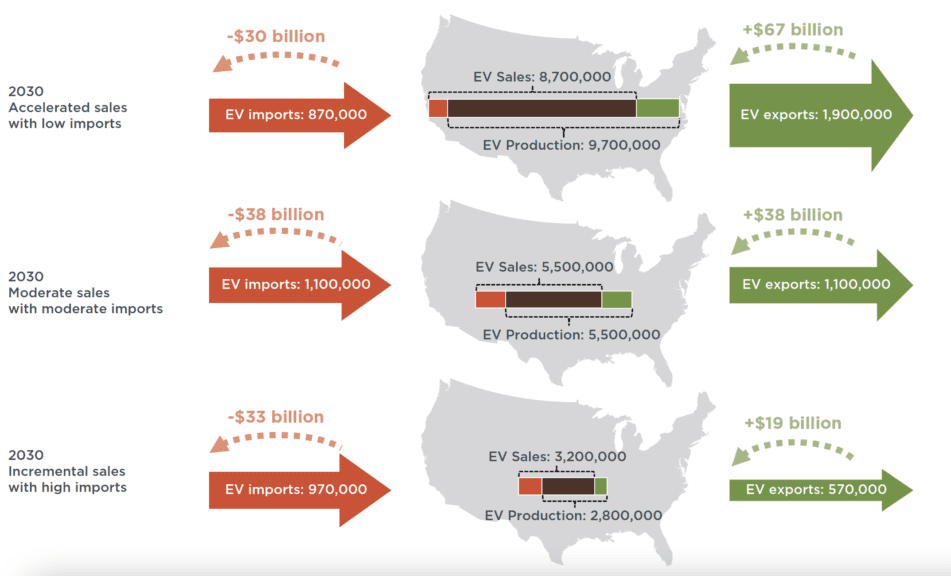Power play: Evaluating the U.S. position in the global electric vehicle transition
Briefing
Power play: Unlocking the potential for U.S. automotive trade with electric vehicles
This briefing evaluates automotive vehicle trade dynamics by analyzing the vehicle industry and market trends in the United States and globally. It quantifies future U.S. electric vehicle wholesale production, sales, imports, and exports and analyzes the trade revenues associated with these activities.
Onshoring the electric vehicle industry would provide the United States a comparative advantage for several reasons. First, the expansion of electric vehicle research and development (R&D) creates professional jobs and innovation to make electric vehicles more reliable and efficient. Second, U.S.-made electric vehicles would constitute high-value goods on the global market with all the advantages that highly developed R&D provides. And third, establishing domestic battery manufacturing for electric vehicles has a variety of benefits. Historically, countries that have invested in electric vehicle battery production have also experienced a significant increase in electric vehicle production, and consequently, greater exports of electric vehicles and higher associated revenues. In addition, these countries stand to benefit from new employment opportunities, increased domestic electric vehicle sales, reduced fuel and vehicle imports, and expanded exports to other emerging electric vehicle markets as the global shift continues. Advanced batteries can also become crucial in other critical areas, for example, in storage applications for a cleaner grid that future-proofs national climate goals and provides positive economic and environmental externalities. For all these reasons, the U.S. automobile manufacturing industry would face the greatest industry and economic risk if they fell behind in the transition to electric vehicles.
We conclude with the following four takeaways related to the U.S. position in the electric vehicle industry and its opportunity to become a leader in the sector.
The U.S. light-duty and electric vehicle markets are behind China and Europe. These two electric vehicle markets each had more than four times electric vehicle sales of the United States, and three times the U.S. production, in 2020.
Markets with well-designed policies and incentives experience electric vehicle growth. Federal regulatory and support policies along with incentives are critical to shaping automakers’ decisions on new electric vehicle facility construction and facility upgrades to support the transition.
Establishing a robust domestic electric vehicle manufacturing industry comes with great benefits. Our scenarios demonstrate that if the United States reaches 50% electric vehicle sales and imports just 10% of them, the country would potentially have $188 billion in trade surplus, accumulated from 2021 to 2030.
The United States has the potential to establish more supply chain production capacity to support the domestic electric vehicle industry and job growth. As the country rapidly shifts to production of more electric vehicles, policies to establish an adequate and premium supply chain are crucial to reduce United States reliance on imports from other markets. By doing so, the country can vertically integrate more production, offset imports, reduce upfront vehicle costs, and create jobs upstream and downstream within the electric vehicle ecosystem.
Global competition among countries is moving the electric vehicle transition forward rapidly. Along with investment announcements by major automakers, governments worldwide are developing policy and market signals to attract more private investment and accelerate deployment. This briefing demonstrates the potential and extent to which the United States can lead, or lag behind, the global transition.

Figure. U.S. electric vehicle market metric volumes and trade revenue, three scenarios, 2030
